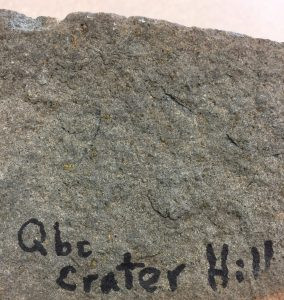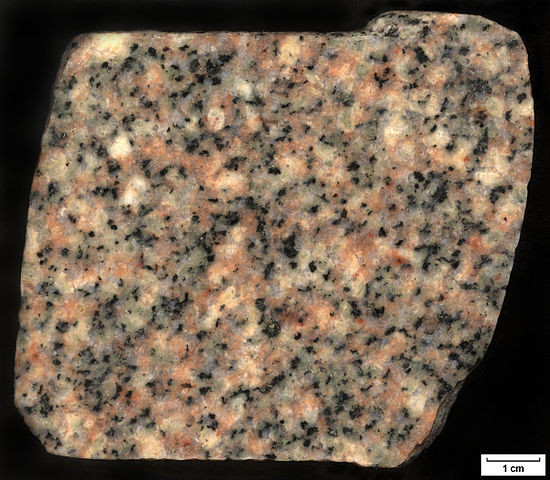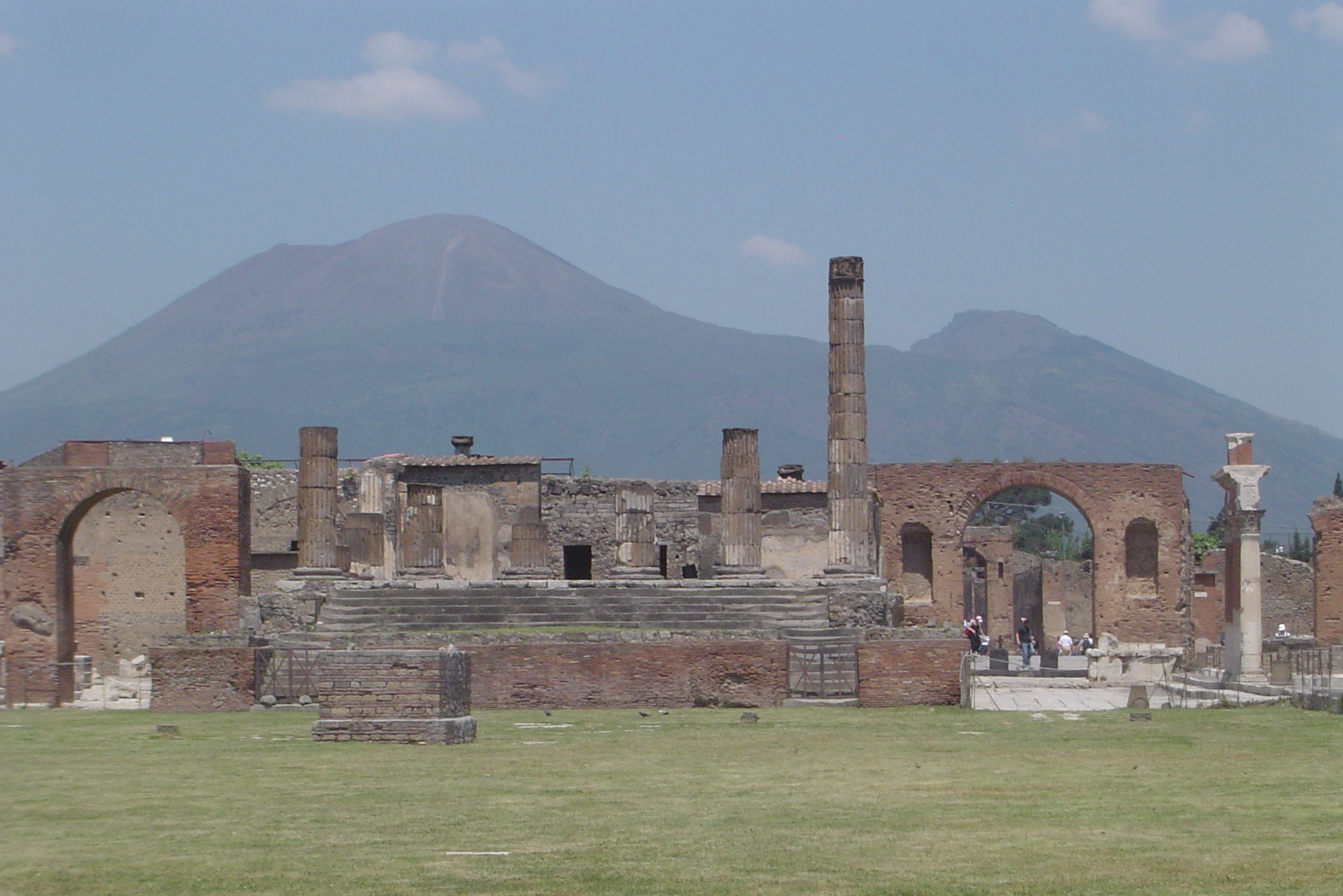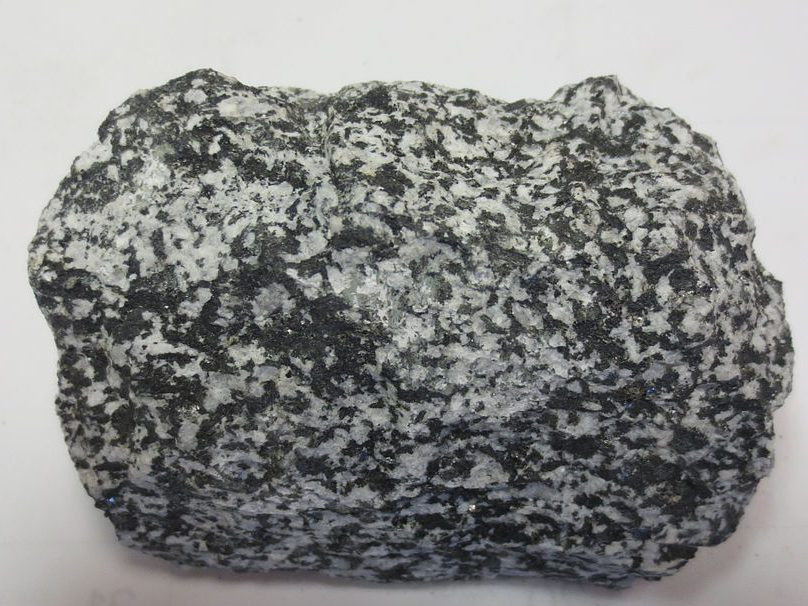Mafic volcanic rocks reach Earth’s surface through various geological processes, primarily involving magma generation and ascent; let’s delve into this process to understand how these rocks form. Rockscapes.net is your ultimate resource to explore the fascinating world of rocks and landscapes, let’s get to it!
Want to discover how you can incorporate stunning rock features into your landscape? Rockscapes.net offers unique inspiration, detailed information on the composition of the rocks, and expert construction tips, from granite to basalt.
1. Understanding Mafic Volcanic Rocks
What are mafic volcanic rocks and why are they important?
Mafic volcanic rocks are dark-colored igneous rocks rich in magnesium (Mg) and iron (Fe) — hence the term “mafic” — that erupt onto the Earth’s surface as lava. These rocks, which include basalt and gabbro, play a crucial role in understanding Earth’s geological processes, plate tectonics, and the formation of oceanic crust, and are often used in decorative landscape.
1.1. Composition of Mafic Rocks
What makes mafic rocks different from other types of rocks?
Mafic rocks are primarily composed of minerals like pyroxene, olivine, and plagioclase feldspar. These minerals give mafic rocks their characteristic dark color and relatively high density. Unlike felsic rocks, mafic rocks contain less silica (SiO2) and are richer in magnesium and iron. This composition dictates their behavior during melting and crystallization processes, influencing how they reach the Earth’s surface.
1.2. Where Are Mafic Rocks Found?
Where can we find mafic rocks, and what geological features do they create?
Mafic rocks are predominantly found in oceanic crust and volcanic regions around the world. They form extensive lava flows, shield volcanoes, and other volcanic structures. Notable examples include the basaltic lava flows of Hawaii, the Giant’s Causeway in Ireland with its columnar basalt formations, and the vast oceanic ridges where new crust is continuously created.
2. Magma Generation: The Birth of Mafic Rocks
How are mafic rocks generated beneath the Earth’s surface?
The journey of mafic volcanic rocks begins with the generation of magma deep within the Earth’s mantle. Magma generation occurs through three primary mechanisms: decompression melting, flux melting, and heat-induced melting, each of which plays a crucial role in the formation of mafic magma.
2.1. Decompression Melting
What is decompression melting, and how does it contribute to mafic magma formation?
Decompression melting occurs when the pressure on hot mantle rock decreases, allowing it to melt without adding heat. This process commonly happens at mid-ocean ridges, where tectonic plates diverge, reducing the pressure on the underlying mantle, which leads to the partial melting of ultramafic mantle rock (peridotite), producing mafic magma. According to research from Arizona State University’s School of Earth and Space Exploration, in July 2025, decompression melting accounts for the majority of magma production on Earth.
2.2. Flux Melting
How does flux melting facilitate the creation of mafic magma in subduction zones?
Flux melting, also known as fluid-induced melting, occurs in subduction zones where one tectonic plate slides beneath another. As the subducting plate descends, it releases water and other volatile substances into the overlying mantle. These volatiles lower the melting point of the mantle rock, causing it to melt and generate mafic magma. This process is responsible for the formation of volcanic arcs, such as the Ring of Fire around the Pacific Ocean.
2.3. Heat-Induced Melting
Under what circumstances does heat-induced melting generate mafic magma?
Heat-induced melting, or thermal melting, occurs when mantle plumes or hotspots bring abnormally hot material from deep within the Earth to shallower depths. This heat raises the temperature of the surrounding mantle rock, causing it to melt and form mafic magma. Hotspots, such as those beneath Hawaii and Iceland, are prime examples of locations where heat-induced melting generates significant volumes of mafic magma.
3. Magma Ascent: The Journey to the Surface
How does mafic magma make its way from the mantle to the Earth’s surface?
Once mafic magma is generated, it begins its ascent toward the Earth’s surface due to its lower density compared to the surrounding solid rock. This ascent involves several stages, including the formation of magma chambers, dike propagation, and volcanic eruptions.
3.1. Formation of Magma Chambers
What role do magma chambers play in the ascent of mafic magma?
As magma rises through the mantle and crust, it can accumulate in magma chambers, which are large reservoirs of molten rock. These chambers act as temporary storage facilities, allowing the magma to partially cool and differentiate. During this process, minerals with higher melting points crystallize and settle to the bottom of the chamber, while the remaining magma becomes more enriched in silica and other volatile components.
3.2. Dike Propagation
How do dikes facilitate the upward movement of mafic magma?
From magma chambers, magma often propagates upward through fractures and cracks in the surrounding rock, forming dikes. Dikes are vertical or near-vertical intrusions of magma that can extend for tens or even hundreds of kilometers. These structures act as conduits, allowing magma to move rapidly toward the surface.
3.3. Volcanic Eruptions
What triggers volcanic eruptions, and how do they bring mafic magma to the Earth’s surface?
The final stage in the journey of mafic magma is the volcanic eruption. Eruptions occur when the pressure within the magma chamber exceeds the strength of the surrounding rock, causing the magma to burst through the surface. Eruptions can range from effusive, characterized by the slow, steady flow of lava, to explosive, involving the violent ejection of ash, gas, and pyroclastic material.
4. Types of Mafic Volcanic Eruptions
What are the different styles of mafic volcanic eruptions?
Mafic volcanic eruptions exhibit a range of styles, each influenced by factors such as magma composition, gas content, and the surrounding geological environment. The two primary types of mafic volcanic eruptions are effusive and explosive.
4.1. Effusive Eruptions
What are effusive eruptions, and where do they typically occur?
Effusive eruptions are characterized by the relatively gentle outflow of lava onto the Earth’s surface. These eruptions typically occur at shield volcanoes and mid-ocean ridges, where the magma is basaltic in composition, low in viscosity, and has a low gas content. The lava flows can travel long distances, creating extensive lava fields and gently sloping volcanic edifices.
4.2. Explosive Eruptions
What factors contribute to explosive mafic volcanic eruptions, and what hazards do they pose?
Explosive eruptions involve the violent ejection of ash, gas, and pyroclastic material into the atmosphere. Although mafic magmas are generally less prone to explosive eruptions than felsic magmas, they can still occur under certain conditions. Factors that contribute to explosive mafic eruptions include high gas content, rapid ascent rates, and interaction with groundwater or seawater.
5. Geological Settings for Mafic Volcanism
In what geological settings do we typically find mafic volcanism?
Mafic volcanism is associated with several distinct geological settings, each characterized by unique tectonic processes and magma generation mechanisms. These settings include mid-ocean ridges, hotspots, subduction zones, and continental rifts.
5.1. Mid-Ocean Ridges
How does mafic volcanism contribute to the formation of oceanic crust at mid-ocean ridges?
Mid-ocean ridges are underwater mountain ranges where new oceanic crust is formed through seafloor spreading. Mafic volcanism is the dominant process at these ridges, with basaltic lava erupting along the ridge axis to create new crust. Decompression melting of the underlying mantle is the primary mechanism for magma generation.
5.2. Hotspots
What role do hotspots play in the formation of mafic volcanic islands and seamounts?
Hotspots are areas of intense volcanic activity that are thought to be caused by mantle plumes rising from deep within the Earth. As tectonic plates move over these hotspots, they create chains of volcanic islands and seamounts. The Hawaiian Islands are a classic example of a hotspot volcanic chain, with mafic volcanism responsible for the formation of the islands.
5.3. Subduction Zones
How does mafic volcanism in subduction zones contribute to the formation of volcanic arcs?
Subduction zones are regions where one tectonic plate slides beneath another. Mafic volcanism is common in these zones, with magma generated through flux melting of the mantle wedge above the subducting plate. This magma rises to the surface, forming volcanic arcs, such as the Aleutian Islands and the Andes Mountains.
5.4. Continental Rifts
What types of mafic volcanic features are typically found in continental rift zones?
Continental rifts are regions where the Earth’s crust is being stretched and thinned, leading to the formation of rift valleys. Mafic volcanism is often associated with these rifts, with basaltic lava erupting along fissures and forming flood basalts, shield volcanoes, and cinder cones. The East African Rift System is a prominent example of a continental rift zone with extensive mafic volcanism.
6. Real-World Examples of Mafic Volcanism
Where can we observe mafic volcanism in action today?
To illustrate the processes by which mafic volcanic rocks reach the Earth’s surface, let’s examine several real-world examples of mafic volcanism in different geological settings.
6.1. Hawaiian Islands
How do the Hawaiian Islands exemplify hotspot mafic volcanism?
The Hawaiian Islands are a prime example of hotspot mafic volcanism. These islands have been formed by the movement of the Pacific Plate over a stationary mantle plume, resulting in a chain of volcanic islands and seamounts. Kilauea and Mauna Loa are two of the most active volcanoes in the world, with ongoing effusive eruptions of basaltic lava.
6.2. Iceland
What makes Iceland a unique setting for studying mafic volcanism?
Iceland is a unique setting for studying mafic volcanism because it is located on both a mid-ocean ridge and a hotspot. This combination of tectonic processes results in a high concentration of volcanic activity, with frequent eruptions of basaltic lava. The country is also home to numerous shield volcanoes, fissure eruptions, and geothermal areas.
6.3. Mount Etna, Italy
How does Mount Etna showcase mafic volcanism in a subduction zone setting?
Mount Etna, located on the island of Sicily, Italy, is one of the most active volcanoes in Europe. It is situated in a complex tectonic setting near the subduction of the African Plate beneath the Eurasian Plate. Mount Etna’s eruptions are characterized by a combination of effusive and explosive activity, with basaltic lava flows and ash plumes.
7. Landscape Design with Mafic Rocks: Inspiration from Rockscapes.net
How can you incorporate the beauty and durability of mafic rocks into your landscape?
Mafic rocks like basalt and gabbro offer unique aesthetic and functional benefits for landscape design. Their dark color contrasts beautifully with lighter elements, and their durability ensures long-lasting installations. Rockscapes.net provides a wealth of ideas and resources to help you integrate mafic rocks into your outdoor spaces.
7.1. Garden Pathways
What are the benefits of using mafic rocks for garden pathways?
Using mafic rocks for garden pathways provides a durable and visually appealing surface. The dark color of basalt or gabbro contrasts nicely with greenery and lighter-colored stones, creating a striking visual effect. Additionally, their resistance to weathering ensures a long-lasting pathway that requires minimal maintenance.
7.2. Water Features
How can mafic rocks enhance the beauty of water features in your landscape?
Mafic rocks add a dramatic touch to water features like ponds and waterfalls. Their dark hue creates a sense of depth and mystery, while their natural texture provides a beautiful contrast to the flowing water. Incorporating mafic rocks of varying sizes and shapes can create a dynamic and visually interesting water feature.
7.3. Retaining Walls
Why are mafic rocks an excellent choice for building retaining walls?
Mafic rocks are an excellent choice for retaining walls due to their strength and durability. Their angular shapes interlock well, providing stability and preventing soil erosion. The dark color of the rocks also adds a sophisticated look to the landscape, making retaining walls both functional and aesthetically pleasing.
7.4. Rock Gardens
What are some creative ways to design rock gardens using mafic rocks?
Mafic rocks are ideal for creating stunning rock gardens that showcase their natural beauty. Combine them with other types of rocks, such as granite or sandstone, to create visual interest and texture. Arrange the rocks in a way that mimics natural formations, and plant drought-tolerant plants around them to complete the rock garden.
8. Frequently Asked Questions (FAQs)
8.1. What are the main differences between mafic and felsic rocks?
Mafic rocks are rich in magnesium and iron, dark in color, and have lower silica content, while felsic rocks are rich in silica, light in color, and have higher silica content.
8.2. How does magma composition affect volcanic eruption style?
Magma composition, specifically its silica and gas content, significantly influences eruption style. Mafic magmas with low silica and gas content tend to produce effusive eruptions, while felsic magmas with high silica and gas content are more likely to cause explosive eruptions.
8.3. What are some common hazards associated with mafic volcanic eruptions?
Common hazards associated with mafic volcanic eruptions include lava flows, ash plumes, volcanic gases, and ground deformation. While mafic eruptions are typically less explosive than felsic eruptions, they can still pose significant risks to nearby communities and infrastructure.
8.4. Where are some of the best places to see mafic volcanic rocks in the United States?
Some of the best places to observe mafic volcanic rocks in the United States include:
- Hawaii Volcanoes National Park, Hawaii
- Craters of the Moon National Monument, Idaho
- Columbia River Basalt Group, Washington and Oregon
- Sunset Crater Volcano National Monument, Arizona
8.5. How do scientists monitor volcanoes to predict eruptions?
Scientists use a variety of techniques to monitor volcanoes and predict eruptions, including:
- Seismic monitoring
- Gas monitoring
- Ground deformation measurements
- Thermal imaging
- Satellite remote sensing
8.6. What is the Ring of Fire, and why is it associated with so much volcanic activity?
The Ring of Fire is a major area in the basin of the Pacific Ocean where many earthquakes and volcanic eruptions occur. It is associated with a high concentration of subduction zones, where one tectonic plate slides beneath another, leading to magma generation and volcanic activity.
8.7. How can I identify mafic rocks in my local area?
Mafic rocks can be identified by their dark color, high density, and mineral composition (primarily pyroxene, olivine, and plagioclase feldspar). Consult a local geologist or rock expert for assistance.
8.8. What is the significance of pillow basalts?
Pillow basalts are rounded, pillow-shaped structures that form when basaltic lava erupts underwater. They provide valuable insights into past volcanic activity and the interaction between lava and water.
8.9. What role do volatiles play in magma generation and eruption?
Volatiles, such as water and carbon dioxide, play a crucial role in magma generation by lowering the melting point of mantle rock. They also influence eruption style, with higher volatile content leading to more explosive eruptions.
8.10. How does erosion affect mafic volcanic landscapes over time?
Erosion gradually wears down mafic volcanic landscapes over time, exposing underlying rock layers, creating unique geological features, and shaping the overall topography. The rate of erosion depends on factors such as climate, rock type, and tectonic activity.
9. Conclusion: The Dynamic Journey of Mafic Rocks
The journey of mafic volcanic rocks from the Earth’s mantle to its surface is a testament to the dynamic processes shaping our planet. From magma generation through decompression melting, flux melting, and heat-induced melting, to magma ascent through magma chambers and dike propagation, and finally to volcanic eruptions that bring molten rock to the surface, each stage plays a vital role in the formation of these fascinating rocks.
Whether you’re a homeowner looking to enhance your landscape with stunning rock features or a professional designer seeking inspiration, Rockscapes.net is your go-to resource. Visit rockscapes.net today to explore the beauty and versatility of mafic rocks and discover how you can bring the wonders of geology into your outdoor spaces. Contact us at 1151 S Forest Ave, Tempe, AZ 85281, United States or call +1 (480) 965-9011 to speak with our experts and start your landscape transformation.
 Mafic Rock Garden Design with Drought Tolerant Plants
Mafic Rock Garden Design with Drought Tolerant Plants
 Garden path lined with mafic rocks
Garden path lined with mafic rocks
 Volcanic landscape with mafic rock formations
Volcanic landscape with mafic rock formations
 Mafic rock water feature
Mafic rock water feature